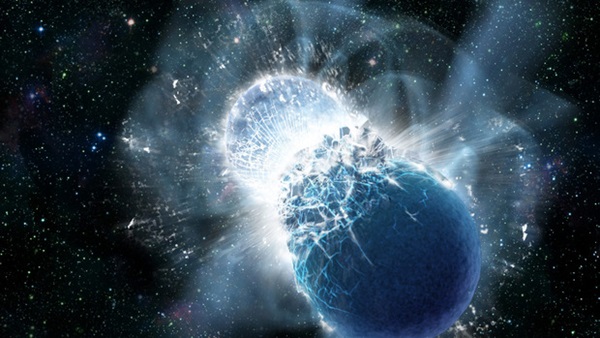
If you enjoy a bit of bling in your life, you could have a billion year old cosmic event to thank for it. Scientists believe that the collision of two neutron stars 4.6 billion years ago could have been the source of some of Earth’s heaviest elements, including gold and platinum.
Neutron stars are incredibly dense and heavy, and when two collide the event is violent and epic. One such collision is believed to have occurred close to our solar system, at a distance of about 1000 light-years away, about 100 million years before the Earth was formed. “If a comparable event happened today at a similar distance from the solar system, the ensuing radiation could outshine the entire night sky,” Astrophysicist Szabolcs Márka from Columbia University said in a statement.
The collision would have sent heavy elements spiraling out into the dust cloud of our early solar system. The scientists have calculated that 0.3% of Earth’s heavy elements came from this single event. “This means that in each of us we would find an eyelash worth of these elements, mostly in the form of iodine, which is essential to life,” fellow scientist Imre Bartos of the University of Florida said in the same statement.
The duo tracked the effects of the neutron star collision by looking at the composition of meteorites and how this compared to simulations of the Milky Way. As they were formed in the early solar system, meteorites have traces of radioactive isotopes which act as markers that show their age and give clues about their origin. By measuring the decay of these radioactive isotopes, scientists can work out how old they are.
These results not only give an insight into the history of our planet, but also raise existential implications about our place in the universe.
“Our results address a fundamental quest of humanity: Where did we come from and where are we going?” Márka said. “It is very difficult to describe the tremendous emotions we felt when we realized what we had found and what it means for the future as we search for an explanation of our place in the universe.”
The findings are published in Nature.



